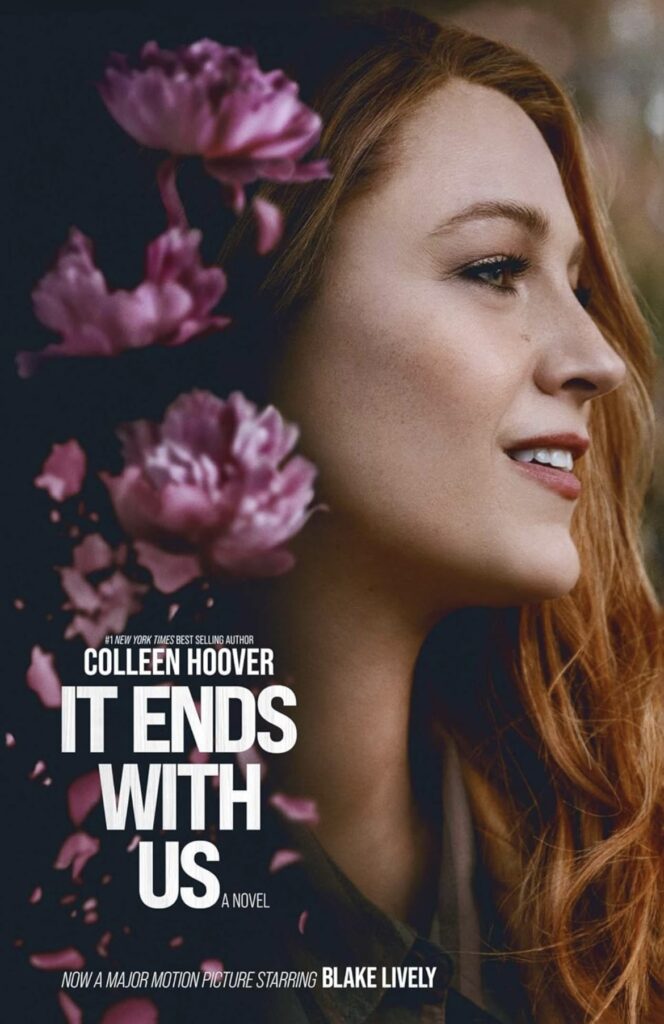Table of Contents Show
It Ends with Us by Colleen Hoover is a powerful and emotionally charged novel that delves deeply into the complexities of love, relationships, and the difficult choices one makes in the face of domestic abuse. With its compelling narrative and honest portrayal of sensitive topics, the book presents a story that resonates with readers who have experienced, witnessed, or are simply trying to understand the cycle of abuse in intimate relationships.
Plot Overview (Without Spoilers)
The novel follows Lily Bloom, a young woman with a traumatic childhood, who finds herself torn between two men: her new lover, Ryle Kincaid, a brilliant neurosurgeon with a dark side, and Atlas Corrigan, a figure from her past who represents safety and love. As Lily falls deeply for Ryle, she begins to uncover unsettling behaviors in their relationship, forcing her to confront difficult truths about love and the echoes of her past. The novel is as much about Lily's personal journey of self-discovery as it is about her grappling with the realities of domestic abuse.
Themes of Domestic Abuse
Hoover masterfully presents the subtleties of abuse through Lily's relationships, using the story to showcase the often hidden signs of dating and domestic abuse that are not immediately apparent. The book reflects on how abuse is not always physical in the beginning and can manifest in psychological manipulation, control, and emotional volatility, making it difficult for the victim to recognize the severity of the situation.
Some of the hidden signs of domestic abuse reflected in the novel include:
- Love Bombing and Idealization: In the early stages of Lily's relationship with Ryle, she experiences what appears to be an ideal romance—intense affection, passion, and charm. This is common in abusive relationships, where the abuser initially showers their partner with attention and affection, creating a strong emotional bond that later makes it hard for the victim to leave.
- Emotional Manipulation: As the relationship progresses, Lily starts to encounter moments where Ryle's behavior becomes unpredictable. Abusers often use manipulation, guilt-tripping, or shifting blame to make the victim feel responsible for their outbursts or aggression. This is portrayed through Ryle's reactions to situations that provoke his anger or insecurity, where he flips the narrative and makes Lily feel confused or at fault.
- Jealousy and Possessiveness: While jealousy can be seen as flattering in moderation, it can also be a red flag when it turns into possessiveness or control. Ryle exhibits jealousy over Atlas, Lily’s childhood friend, and his possessiveness is a subtle but significant aspect of his behavior. These warning signs often precede physical violence in abusive relationships.
- Cycle of Abuse: The novel illustrates the cyclical nature of abuse—explosive incidents followed by remorse, apologies, and promises to change, only for the abuse to repeat. Ryle's moments of kindness and regret contrast sharply with his violent episodes, a pattern that is common in abusive relationships and can trap victims in a cycle of hope and fear.
- Self-Blame and Rationalization: Hoover also explores the emotional turmoil victims experience. Lily, like many victims, rationalizes Ryle’s behavior, blaming his past trauma or his stress, which is a psychological survival mechanism for those caught in abusive situations. It’s often easier for victims to excuse the abuser’s behavior rather than confront the terrifying reality of the relationship’s toxicity.
Relating to the Broader Issue of Domestic Abuse
It Ends with Us does an excellent job of portraying how domestic abuse can develop even in relationships that initially seem perfect. It highlights how love can make it difficult to recognize and act on early warning signs, and it explores the internal conflict victims face when deciding whether to leave or stay. This internal struggle is a crucial point in the narrative, as Lily’s personal history of witnessing her mother’s abuse influences her decisions and complicates her feelings.
The book also tackles the societal stigmas and misconceptions around domestic violence—particularly the question of why victims don’t simply leave. Hoover emphasizes that leaving an abusive relationship is not always straightforward due to the emotional bonds, fear, and practical obstacles (financial dependence, shared children, etc.). This nuanced portrayal invites readers to challenge their assumptions about domestic abuse and to better understand the psychological and emotional barriers that keep victims trapped.
Writing Style and Impact
Colleen Hoover's writing style is engaging and accessible, making this heavy subject matter digestible for a wide audience. Her first-person narrative allows readers to step into Lily's shoes, creating a deep emotional connection with her internal struggles. The book’s pacing is well-balanced, and the slow unraveling of Lily’s relationship with Ryle keeps readers both invested and on edge. Hoover’s skill lies in her ability to build empathy for all her characters, even those who make harmful choices, reflecting the complicated nature of real-life relationships.
Conclusion: A Thought-Provoking and Necessary Read
It Ends with Us is more than just a romance novel; it’s a raw, unflinching look at the realities of domestic abuse and the difficult decisions victims face. Hoover’s portrayal of Lily’s journey is powerful, inspiring readers to think deeply about the complexities of love, trauma, and self-worth. By shedding light on the hidden signs of dating and domestic abuse, the novel fosters awareness and encourages compassion for those trapped in such relationships.
For readers looking for novels that explore similar themes, I’d recommend The Girl on the Train by Paula Hawkins, which also deals with emotional abuse and trauma, and Big Little Lies by Liane Moriarty, which delves into domestic violence within seemingly perfect families. Both books, like It Ends with Us, provide nuanced explorations of how love and abuse can coexist in ways that are difficult to detect from the outside.
This novel serves as a reminder that abuse isn’t always black and white—and that the most important relationship we have is the one with ourselves.
“There is no such thing as bad people. We’re all just people who sometimes do bad things.”
This quote is central to the book’s exploration of the moral ambiguity that often surrounds abusive relationships. Lily wrestles with the idea that while Ryle does harmful things, he is not entirely defined by them. It highlights one of the book’s key themes—how love can sometimes blind us to harmful behavior, making it difficult to reconcile our feelings for someone who does both good and bad.
This sentiment runs throughout the novel as Lily reflects on her own family’s history of abuse and grapples with the same patterns emerging in her life. It emphasizes the internal conflict many victims face in abusive relationships, where they struggle to separate the person they love from the harm they cause.





